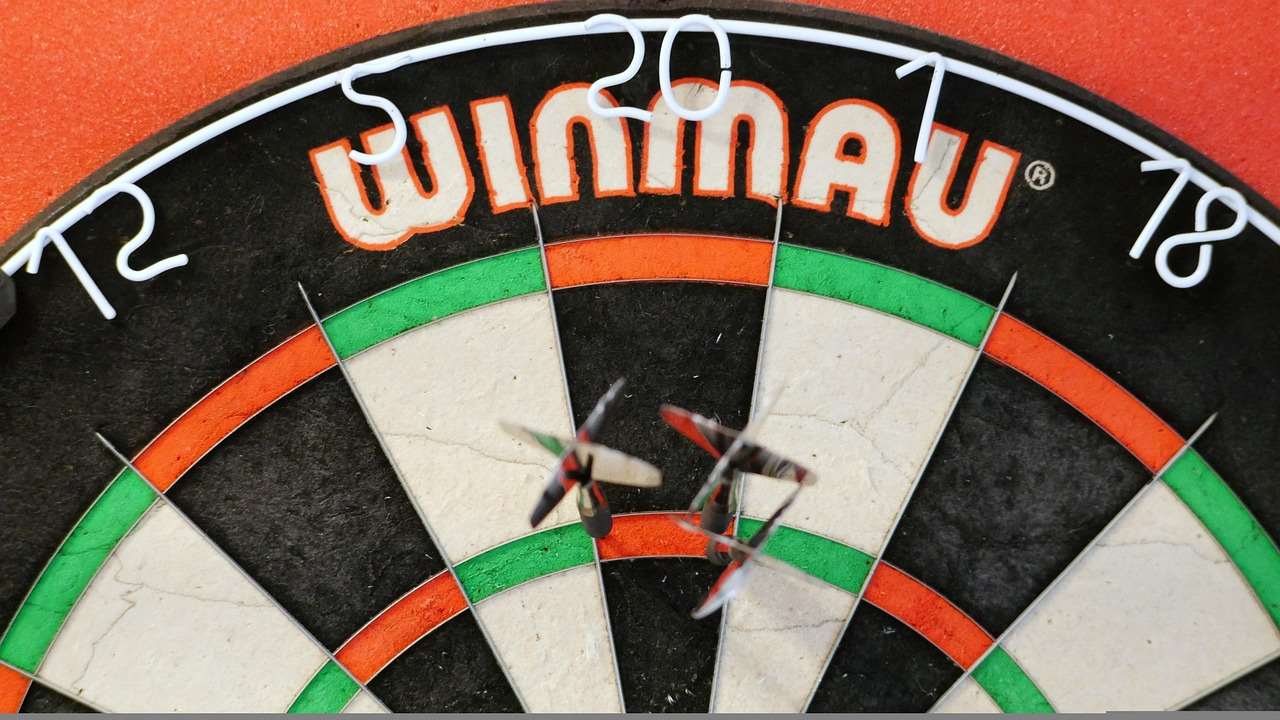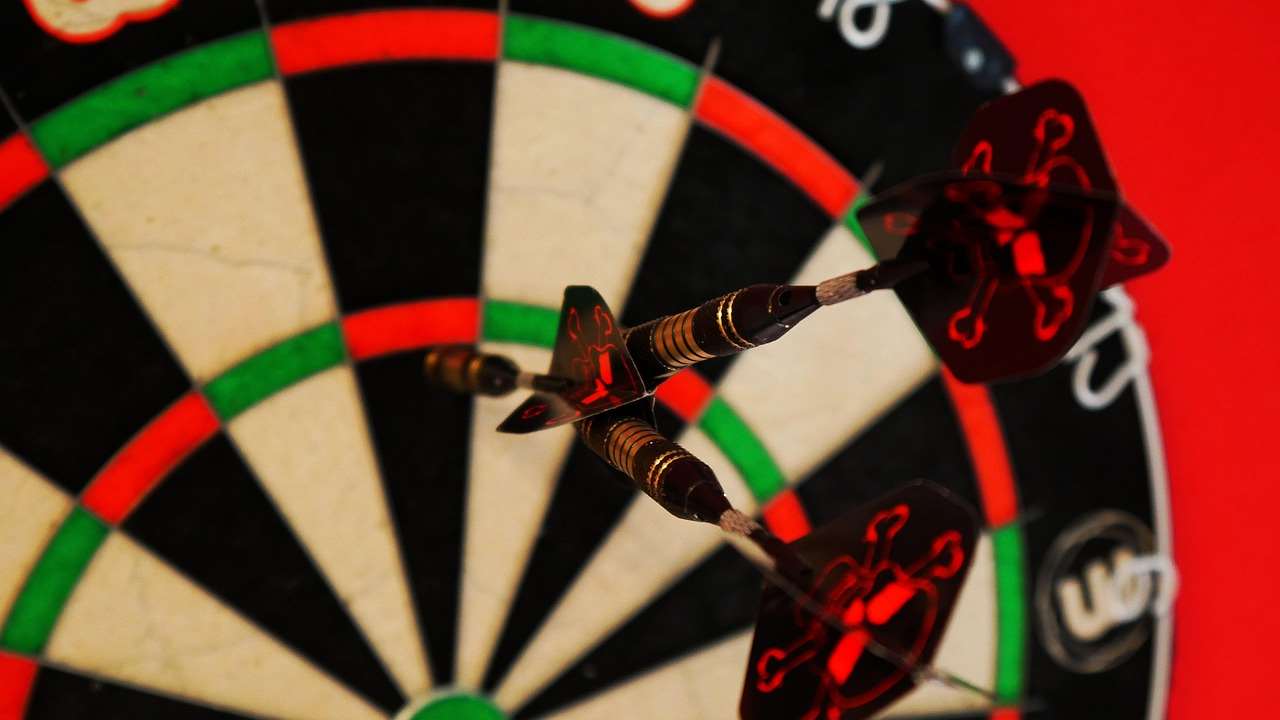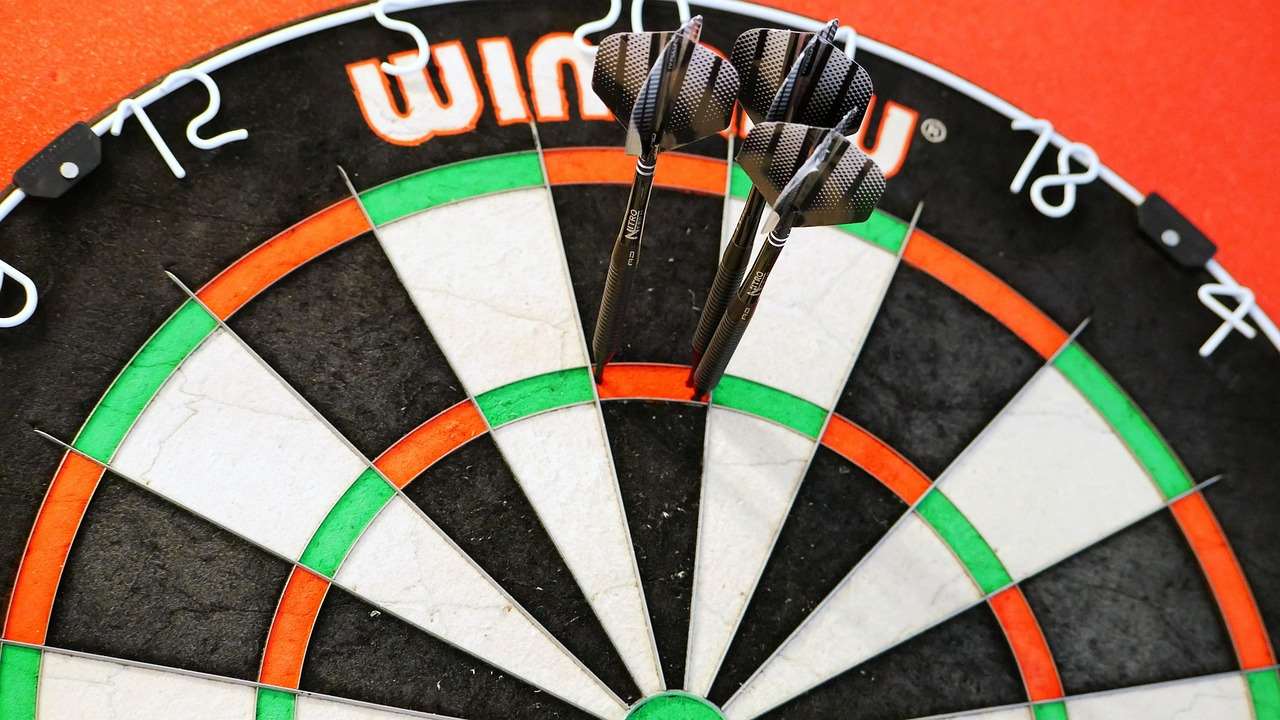Darts smart clothing technology promises to revolutionize player training and performance analysis by providing real-time biomechanical data. This article explores the emerging field of smart clothing in darts, covering its potential benefits, current technologies, challenges, and future implications for the sport.
⚠️ Still Using Pen & Paper (or a Chalkboard)?! ⚠️
Step into the future! The Dart Counter App handles all the scoring, suggests checkouts, and tracks your stats automatically. It's easier than you think!
Try the Smart Dart Counter App FREE!Ready for an upgrade? Click above!

Understanding Darts Smart Clothing Technology
Darts smart clothing technology involves integrating sensors and microelectronics directly into apparel worn by darts players. These sensors capture data related to body movements, muscle activity, and posture during the throwing motion. The data is then transmitted wirelessly to a computer or mobile device for analysis, providing valuable insights into a player’s technique and identifying areas for improvement.
Key Components of Darts Smart Clothing
- Sensors: These measure various parameters like acceleration, angular velocity (using gyroscopes), muscle activity (using electromyography – EMG), and pressure distribution.
- Microcontrollers: These process the sensor data and transmit it wirelessly using protocols like Bluetooth or Wi-Fi.
- Power Source: Usually a small, rechargeable battery powers the electronics.
- Fabric Integration: The sensors and electronics must be seamlessly integrated into the fabric of the clothing for comfort and unobtrusiveness.
Benefits of Using Smart Clothing in Darts
The integration of smart textiles into darts offers a wide range of advantages. Here’s how darts smart clothing technology can elevate the game:
- Improved Technique: Real-time feedback allows players to refine their throwing motion and develop a more consistent and accurate technique. This is especially useful for correcting subtle flaws that are difficult to detect with the naked eye.
- Injury Prevention: By monitoring muscle strain and fatigue, smart clothing can help players avoid overuse injuries. The data can identify areas of the body that are under excessive stress, allowing players to adjust their technique or training regimen to reduce the risk of injury.
- Personalized Training: The data collected by smart clothing can be used to create personalized training programs tailored to the individual player’s needs and strengths. This can lead to more effective and efficient training sessions.
- Performance Analysis: Coaches can use the data to analyze a player’s performance in detail, identifying areas where they excel and areas where they need to improve. This allows for more targeted coaching and feedback. You can learn more about the Business of Darts and how technology plays a part.
- Objective Measurement: Smart clothing provides objective measurements of a player’s performance, eliminating the subjectivity of traditional observation methods. This can be particularly useful for comparing players and tracking progress over time.

Applications in Different Areas of Darts
- Professional Players: Elite players can use smart clothing to gain a competitive edge by optimizing their technique and preventing injuries. The data can be used to fine-tune their throwing motion and identify areas for improvement that even the most experienced coaches might miss.
- Amateur Players: Recreational players can use smart clothing to improve their game and have more fun. The feedback can help them develop a more consistent and accurate throwing motion, leading to more enjoyable games.
- Coaches: Coaches can use smart clothing to provide more effective and personalized feedback to their players. The data can help them identify areas where players need to improve and develop training programs tailored to their individual needs.
- Researchers: Researchers can use smart clothing to study the biomechanics of dart throwing and develop new training methods. The data can provide valuable insights into the factors that contribute to successful dart throwing.
Current State of Darts Smart Clothing Technology
While still in its early stages, darts smart clothing technology is rapidly evolving. Several companies and research institutions are developing prototypes and commercially available products. These early adopters are beginning to see the benefits of wearable sensors in optimizing their performance.
Examples of Existing Technologies
- Sensor-embedded shirts: These shirts contain sensors that measure muscle activity, posture, and body movements. They provide real-time feedback to the player and coach, helping them identify and correct technical flaws.
- Smart sleeves: These sleeves focus on measuring arm movements and muscle activity in the throwing arm. They can provide detailed data on the acceleration, velocity, and angle of the arm during the throw, helping players improve their consistency and accuracy.
- Pressure-sensitive mats: While not clothing, these mats can be used in conjunction with smart clothing to provide additional data on a player’s balance and weight distribution. They can help players develop a more stable and consistent stance.

Challenges and Limitations
Despite the potential benefits, several challenges and limitations need to be addressed before darts smart clothing technology becomes widely adopted. One hurdle involves navigating how darts media deals work and their role in technological advancements in sports.
- Cost: Smart clothing can be expensive, making it inaccessible to many players. The high cost is due to the complexity of the technology and the specialized materials required.
- Comfort: The sensors and electronics must be comfortable to wear and not interfere with the player’s movement. Achieving this requires careful design and integration of the technology into the fabric of the clothing.
- Durability: The clothing must be durable enough to withstand repeated use and washing. The sensors and electronics must be protected from damage and able to withstand the stresses of regular wear and tear.
- Data Accuracy: The accuracy of the data collected by the sensors is crucial for providing meaningful feedback. The sensors must be calibrated properly and able to provide reliable measurements in a variety of conditions.
- Data Privacy: Players may be concerned about the privacy of the data collected by smart clothing. The data must be stored securely and used only for the purposes for which it was collected.
The Future of Darts Smart Clothing Technology
The future of darts smart clothing technology looks promising. As the technology continues to develop and become more affordable, it is likely to become more widely adopted by players of all levels. We are also seeing interesting developments relating to the darts tv rights value and the opportunities that brings to invest in technology.
Potential Future Developments
- Improved Sensors: Sensors will become smaller, more accurate, and more comfortable to wear. They will also be able to measure a wider range of parameters, such as heart rate, breathing rate, and skin temperature.
- Advanced Data Analysis: Data analysis techniques will become more sophisticated, allowing for more detailed and personalized feedback. Machine learning algorithms will be used to identify patterns in the data and predict future performance.
- Seamless Integration: Smart clothing will become more seamlessly integrated into everyday clothing, making it more convenient and accessible to players. The technology will be virtually invisible and undetectable.
- Real-time Feedback Systems: Real-time feedback systems will become more advanced, providing players with immediate feedback on their performance. This will allow players to make instant adjustments to their technique and improve their game in real-time.

Ethical Considerations in Darts and Smart Clothing
As darts smart clothing technology advances, it’s vital to address potential ethical considerations. Ensuring fair play and preventing an over-reliance on technology are paramount. Fair play needs to considered in all circumstances, especially when the PDC Sky Sports deal worth millions is involved.
Maintaining Fair Competition
- Transparency: Rules and regulations must be clear about what data can be collected and used during competitions.
- Equal Access: Efforts should be made to ensure that all players have access to similar technology, preventing a technological divide.
- Data Usage: Restrictions may be needed on the types of data that can be accessed and used by coaches or players during matches to maintain the integrity of the sport.
Preventing Over-Reliance and Promoting Skill
- Emphasis on Core Skills: Training should still prioritize the development of fundamental dart-throwing skills, ensuring that technology serves as a tool rather than a crutch.
- Regulation of Assistance: Limits might be placed on the real-time assistance provided by smart clothing during competitive play to preserve the element of human skill and decision-making.

Practical Tips for Using Darts Smart Clothing Technology
If you’re considering using darts smart clothing technology, here are some practical tips to help you get the most out of it:
- Choose the Right Clothing: Select clothing that is comfortable, durable, and fits well. The sensors should be positioned correctly to ensure accurate data collection.
- Calibrate the Sensors: Calibrate the sensors properly before each use to ensure accurate measurements. Follow the manufacturer’s instructions carefully.
- Analyze the Data: Take the time to analyze the data collected by the smart clothing. Look for patterns and trends that can help you identify areas for improvement.
- Work with a Coach: Work with a qualified darts coach who can help you interpret the data and develop a personalized training program.
- Use it Consistently: Use smart clothing consistently during training sessions to track your progress and identify areas where you need to focus your efforts.
Conclusion
Darts smart clothing technology has the potential to transform the sport by providing players with valuable insights into their technique and performance. While challenges remain, the technology is rapidly evolving and becoming more accessible. By understanding the benefits, limitations, and ethical considerations of smart clothing in darts, players, coaches, and researchers can harness its power to improve performance, prevent injuries, and enhance the overall darts experience. Consider exploring options available and start leveraging wearable tech to improve your game today!
Hi, I’m Dieter, and I created Dartcounter (Dartcounterapp.com). My motivation wasn’t being a darts expert – quite the opposite! When I first started playing, I loved the game but found keeping accurate scores and tracking stats difficult and distracting.
I figured I couldn’t be the only one struggling with this. So, I decided to build a solution: an easy-to-use application that everyone, no matter their experience level, could use to manage scoring effortlessly.
My goal for Dartcounter was simple: let the app handle the numbers – the scoring, the averages, the stats, even checkout suggestions – so players could focus purely on their throw and enjoying the game. It began as a way to solve my own beginner’s problem, and I’m thrilled it has grown into a helpful tool for the wider darts community.